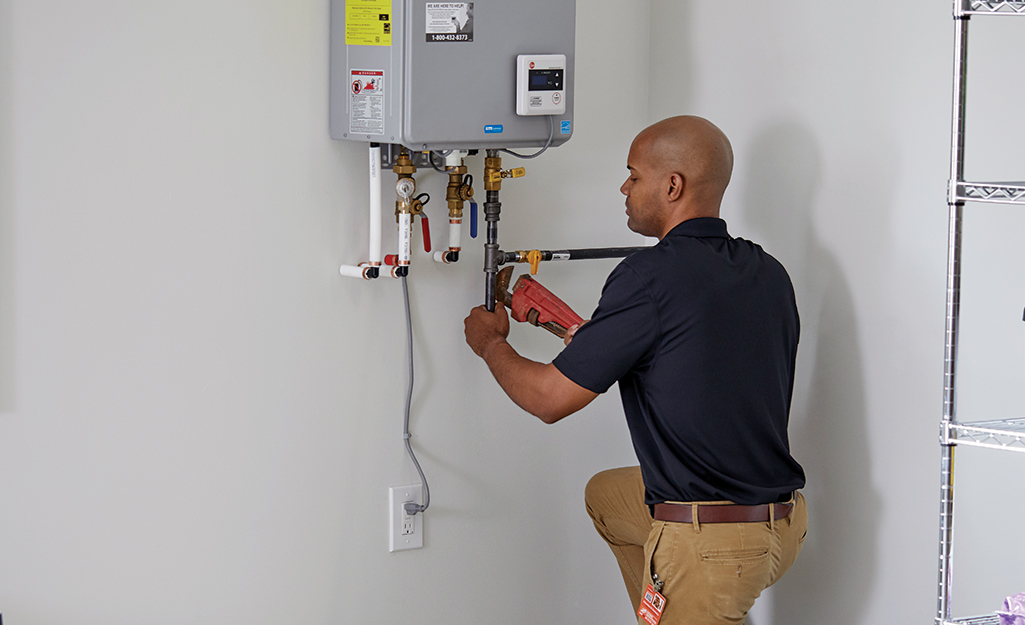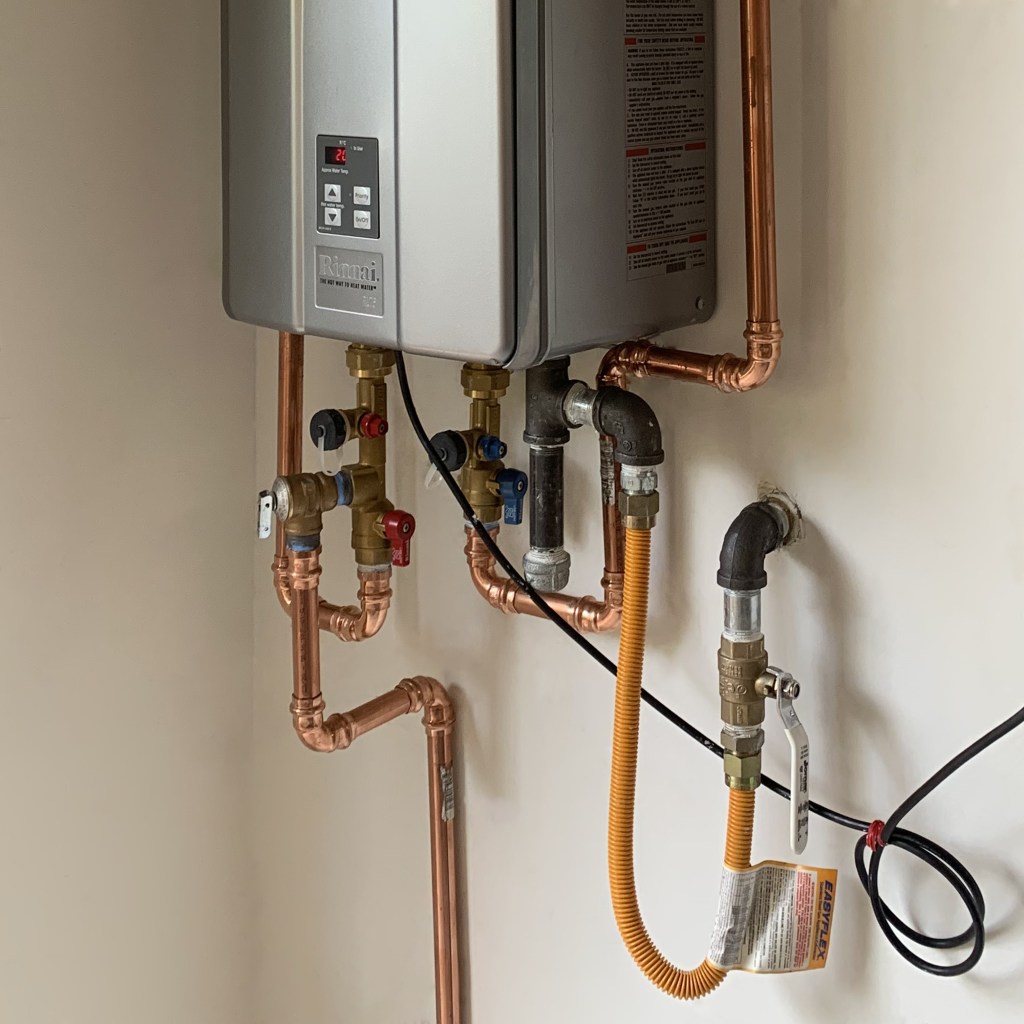Professional Pipe Repair Solutions to Minimize Expensive Water Damage
Professional Pipe Repair Solutions to Minimize Expensive Water Damage
Blog Article
Complete Overview to Water Heating SystemInstallation and Substitute
Recognizing the ins and outs of water heating unit setup and replacement is important for home owners looking for to ensure efficiency and dependability in their warm water supply. From choosing the ideal kind and dimension to executing a smooth installation process, numerous aspects have to be considered to avoid usual challenges.
Kinds Of Hot Water Heater
When considering hot water heater installment and replacement, it is necessary to recognize the numerous sorts of hot water heater readily available out there. The most typical types consist of storage tank water heaters, tankless hot water heater, heatpump water heaters, and solar water heating systems.
Storage tank water heaters are typical systems that keep a specific quantity of hot water, making them conveniently offered when needed. In contrast, tankless water heating systems provide hot water on demand, eliminating the demand for storage.
Warm pump hot water heater use electricity to move warmth from the air or ground to warm water, providing significant power financial savings yet requiring even more space and details setup problems. Last but not least, solar hot water heater harness solar power to heat water, providing a green choice with prospective long-lasting cost financial savings, although they typically call for a back-up system for cloudy days.
Recognizing these alternatives ensures notified decisions concerning setup and replacement, accommodating particular needs and preferences.
Selecting the Right Size
Selecting the appropriate dimension for a water heating unit is vital to ensure ideal performance and effectiveness. An unit that is too little will certainly battle to meet family needs, causing irregular hot water accessibility and increased energy consumption. On the other hand, an extra-large water heating system can lead to unnecessary power waste and greater energy expenses.
To establish the best size, think about the household's top warm water use. This can be calculated based on the variety of residents and their normal warm water needs. For example, a household of four might call for a hot water heater with a capacity of 50 to 80 gallons, depending on the use patterns, such as simultaneous showers and washing.
Additionally, assess the recovery rate, which gauges exactly how promptly a heater can replenish warm water after it has actually been used. For tankless versions, concentrate on the flow price, determined in gallons per min (GPM), to ensure it meets the home's synchronised demand.

Installation Refine Review

Next, the old device has to be detached and removed, making sure to follow neighborhood codes and laws regarding disposal. As soon as the old device is out, the new water heater can be placed in position. This action includes connecting the water supply lines, making certain that all installations are safe and secure and leak-free.
After developing water links, it's important to link the power supply, whether electrical or gas, adhering to the maker's directions thoroughly. Once all links are made, the system should be filled with water, and the power can be transformed back on. Ultimately, it is very important to look for leakages and ensure the hot water heater is functioning appropriately prior to completing the installation procedure.
Common Installation Mistakes

One more regular blunder is ignoring to comply with regional codes and policies. Stopping working to stick to these standards can not just bring about safety risks however might also result in costly fines or the requirement for costly reinstallation. Additionally, incorrect venting is a crucial issue. Inadequate Discover More air flow can create unsafe gas buildup, posing significant health dangers.
Falling short to secure links or using the incorrect kind of installations can lead to leaks and water damage. By avoiding these common setup mistakes, house owners can ensure their water heating unit runs safely and successfully, making best use of efficiency and long life.
Maintenance Tips for Longevity
Proper upkeep of a water heating unit is essential for its longevity and optimal efficiency. Regular evaluations and servicing can protect against costly repair work and extend the device's life-span. Begin by checking the temperature setting; it should generally be established in between 120 ° F and 140 ° F for ideal power efficiency and security.
Every 6 months, purge the storage tank to eliminate debris buildup, which can harm heating efficiency and cause rust. To do this, shut off the heating unit, connect a pipe to the drain valve, and let the water run until it is clear.
Anode rods need to be checked each year and changed when they are corroded. These rods help protect against container corrosion by drawing in harsh aspects in the water.
Furthermore, examine the pressure safety valve regularly to ensure it is working correctly. This shutoff is essential for protecting against too much pressure buildup within the tank.
Finally, take into consideration arranging an expert maintenance check every couple of years for complete examinations and servicing. By sticking to these maintenance pointers, house owners can significantly improve the efficiency, safety and security, and life expectancy of their hot water heater, guaranteeing trusted warm water for many years ahead.
Conclusion
In verdict, correct setup and maintenance of water heating systems are critical for making sure efficiency and longevity. By comprehending these vital facets, homeowners can attain a trustworthy warm water supply while minimizing possible concerns related to water heating system procedure.
Comprehending the details of water heater setup and replacement is essential for house owners seeking to this website make sure efficiency and reliability in their warm water supply.Tank water heaters are conventional systems that save a specific volume of warm water, making them readily available when required. In comparison, tankless water heating systems give warm water on need, eliminating the demand for storage space. Selecting a water heating system that is either also small or also large can lead to inadequacies, resulting in insufficient hot water supply or excessive energy usage.
By understanding these necessary facets, home owners can achieve a reputable warm water supply while reducing potential problems related to water heating system operation. water heater installation.
Report this page